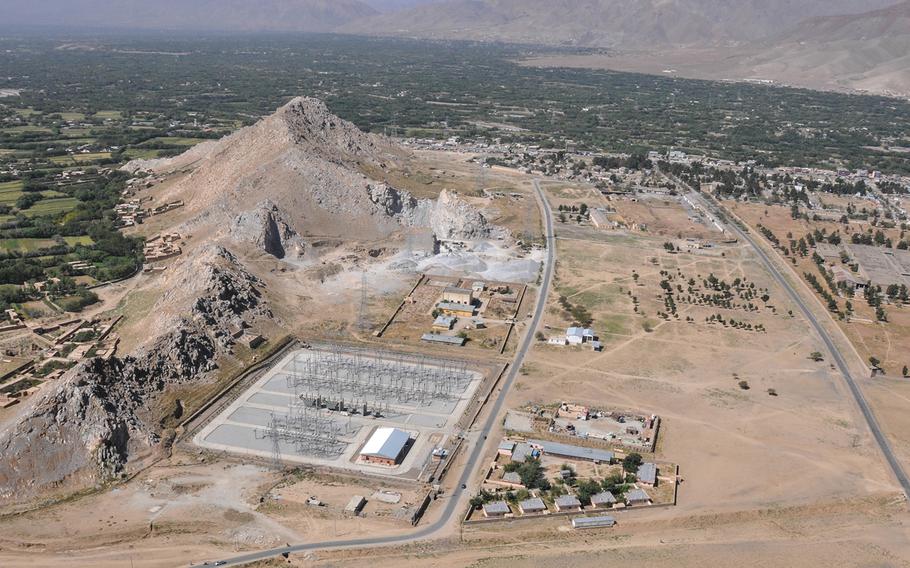
A view of the Gulbahar power substation in Afghanistan.Various infrastructure projects were authorized in 2011 without realistic cost estimates, comprehensive plans for sustainability and a lack of Afghan government resources to support the plans, a Special Inspector General for Afghanistan Reconstruction report issued Oct. 30, 2017, said. (88th Regional Support Command)
WASHINGTON — A key senator is demanding top administration officials explain why their federal agencies haven’t addressed nearly $400 million in U.S.-funded projects in Afghanistan on the verge of failure.
On Wednesday, Sen. Claire McCaskill, D-Mo., and the top-ranking Democrat on the Senate Homeland Security and Government Affairs Committee, asked Secretary of State Rex Tillerson and Defense Secretary Jim Mattis to explain why more isn’t being done to thwart the costly loss.
The projects range from a 25-mile road in Helmand province to justice centers to power improvements throughout the country, according to a report from a U.S. watchdog group.
The projects were authorized in January 2011 without realistic cost estimates, comprehensive plans for sustainability and a lack of Afghan government resources to support the plans, the Special Inspector General for Afghanistan Reconstruction, or SIGAR, said in its quarterly report issued Oct. 30.
McCaskill has asked Tillerson and Mattis to explain the potential failures and why more isn’t being done to address the issues.
“SIGAR reports that all six projects, with a combined investment of nearly $400 million in U.S. taxpayer dollars, are at risk of failure because they are not being sustained once completed and transferred to the Afghan government,” McCaskill said in letters to Mattis and Tillerson. The Defense and State departments along with the U.S. Agency for International Development “failed to develop comprehensive sustainment plans, leaving it to the Afghan government, which does not possess the resources to do so.”
Congress authorized the projects more six years ago as part of the Afghanistan Infrastructure Program to enable the U.S., led by the three key federal agencies, to execute large-scale infrastructure projects in support of the U.S. counterinsurgency strategy and civilian-military campaign in the country, the report said.
The Afghanistan Infrastructure Fund has drawn $1.3 billion between 2011 and 2014. The six 2011 projects are:
A 25-mile, 23-foot-wide paved road from Nawa to Lashkar Gah in the southern region. Five Provincial Justice Centers in five Afghan capitals. A diesel power generator project in Kandahar City. A power system improvement project in the Helmand and Kandahar provinces in the southeast region. A power system improvement project in the Ghazni and Kabul provinces in the northeast region. Transmission line and tower improvements in the eastern portion of the country in the Kabul, Logar and Paktiya provinces.The projects were approved with the expectation that the Defense and State departments along with USAID would install plans for the Afghan government to sustain them, the report said. But that was not the case, SIGAR said.
“Those plans were missing a number of critical elements, including realistic cost estimates for maintenance of each project, a reliability assessment of the planned source of sustainment funding for each project, and capacity assessments of the Afghan government entity responsible for each project,” the report said.
The Defense and State departments did not develop plans to sustain three of the projects after transfer to the Afghans, McCaskill noted. A remaining three projects are incomplete and up to five years behind schedule, and also lack any plans for the Afghan government to sustain them once transferred, she said.
Also, the projects lack performance metrics to determine their success. While SIGAR made recommendations to improve oversight, the agencies indicated they will decline implementing some of these changes. And McCaskill wants to know why.
“You can’t just throw hundreds of millions of taxpayer dollars at a project and hope all goes well, but that’s what the government is doing,” McCaskill said in a statement. “Many of these projects are behind schedule, all six of them are at risk of failure — the departments of State and Defense need to step up their oversight now.”
A 2013 U.S. strategic guidance had underscored the importance of improving the Afghan government’s capacity to maintain and sustain investments in infrastructure as a way to promote economic growth, SIGAR said. The agencies had developed plans to sustain the projects, which was included in the 2011 notification to Congress.
grisales.claudia@stripes.com Twitter: @cgrisales